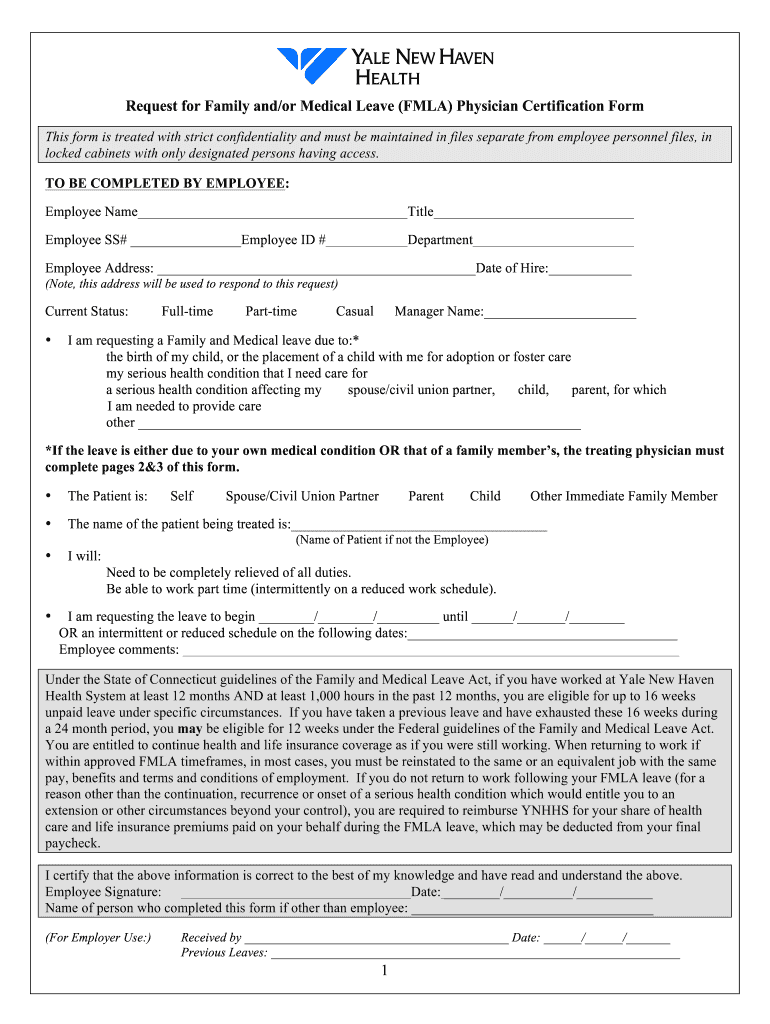5 Ways Hospitals Can Streamline FMLA Paperwork

Hospitals, with their complex workflows and constant influx of patients, often find themselves entangled in a web of administrative tasks. One such task is managing Family and Medical Leave Act (FMLA) paperwork. The FMLA grants eligible employees up to 12 workweeks of unpaid, job-protected leave per year for specified family and medical reasons. Handling these requests efficiently not only improves employee satisfaction but also ensures compliance with federal regulations, reducing the risk of costly litigation. Here are five practical strategies hospitals can implement to streamline FMLA paperwork:
1. Automated FMLA Notification Systems


One of the first steps in streamlining FMLA paperwork involves automating the notification process. Hospitals can leverage:
- Automated Emails: Send immediate notifications to employees upon request submission.
- Workflow Automation Tools: Trigger tasks automatically within the HR system to streamline processing.
- Integration with HR Software: Ensure employee data, eligibility, and leave tracking are automatically updated.
✅ Note: While automation streamlines processes, human oversight remains crucial for addressing complex or nuanced FMLA requests.
2. Digital FMLA Request Forms


Transitioning from paper-based to digital FMLA forms can significantly reduce errors and speed up processing times:
- Online Portals: Create accessible platforms for employees to submit FMLA requests.
- Pre-filled Forms: Use employee data from HR systems to auto-complete parts of the forms.
- Digital Signatures: Enable the use of legally binding e-signatures to expedite approvals.
3. Training and Documentation


Proper training of staff and clear documentation for both employees and HR are essential:
- Employee Workshops: Conduct regular workshops to educate staff on FMLA procedures and rights.
- HR Training: Train HR personnel to handle FMLA efficiently, focusing on compliance and empathy.
- Documentation: Maintain an updated FMLA policy guide, accessible online for all employees.
4. Centralized FMLA Management


To avoid discrepancies and ensure consistency:
- Single Point of Contact: Designate specific HR personnel or a team to manage FMLA requests.
- Electronic Storage: Use secure cloud storage for documents to prevent loss or misplacement.
- Regular Audits: Schedule periodic reviews to maintain compliance and detect issues early.
5. Using Technology for Tracking

Implementing specialized software can enhance the tracking and management of FMLA:
- FMLA Tracking Software: Invest in systems tailored to track leaves, calculate entitlements, and generate reports.
- Real-time Updates: Ensure systems provide real-time updates on leave status to all relevant parties.
- Mobile Accessibility: Allow employees to check their FMLA status on mobile devices.
Implementing these strategies can transform the FMLA process from a cumbersome task into an efficient, employee-friendly system. Hospitals not only comply with legal requirements but also foster an environment of care and understanding, reflecting their commitment to staff well-being. By focusing on automation, digital forms, training, centralized management, and technological tracking, hospitals can ensure that FMLA is managed with precision and empathy, enhancing both employee retention and operational efficiency.
How can hospitals ensure compliance when managing FMLA paperwork?

+
By implementing automated systems for FMLA notifications, regular training sessions, and periodic audits, hospitals can maintain compliance with federal FMLA regulations. These practices ensure that leaves are tracked accurately, employees are properly informed, and the hospital’s policies align with legal requirements.
What are the benefits of using digital forms for FMLA requests?

+
Digital FMLA forms reduce processing times, minimize errors due to manual entry, facilitate e-signatures for faster approvals, and allow for easy tracking and storage of documents. They also enhance accessibility for employees, enabling them to submit requests from anywhere at any time.
How can hospitals manage the complexity of FMLA requests?

+
Complexity can be managed through a combination of automation, dedicated FMLA management teams, clear policy documentation, and using technology for tracking. Additionally, training both HR and employees about FMLA intricacies helps address unique or challenging requests efficiently.
What role does technology play in FMLA management?

+
Technology streamlines FMLA management by providing tools for tracking, notifications, approvals, and data management. It reduces paperwork, automates routine tasks, and ensures that all parties have real-time access to leave information, enhancing both compliance and employee experience.
How can hospitals make the FMLA process empathetic and efficient?

+
By focusing on staff training for compassionate handling of FMLA requests, implementing user-friendly digital systems, providing clear communication, and ensuring human oversight in the process, hospitals can balance efficiency with empathy.